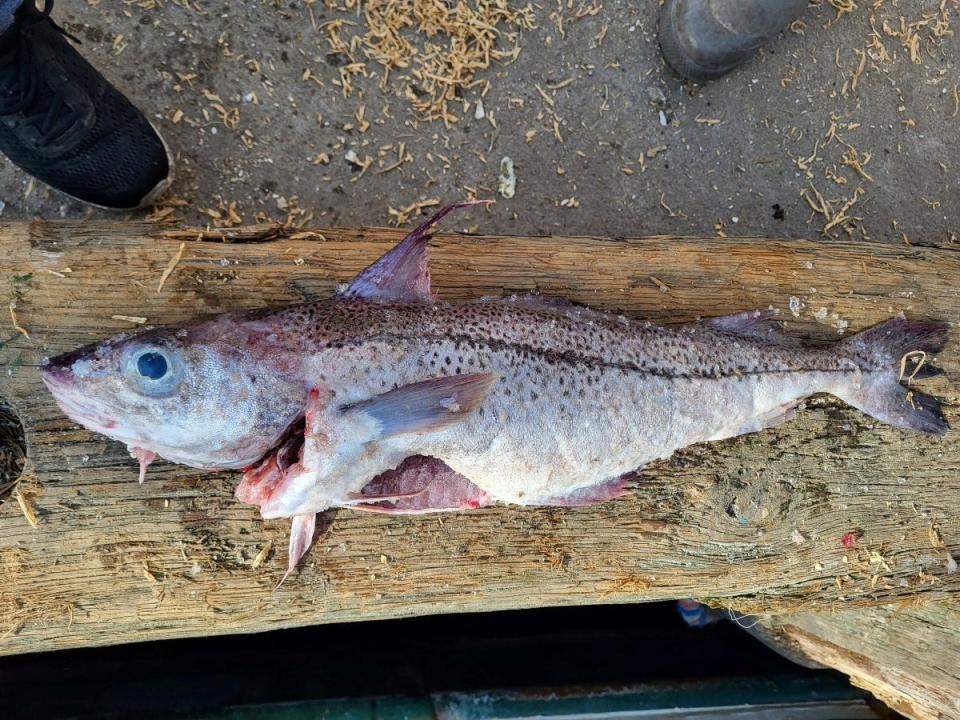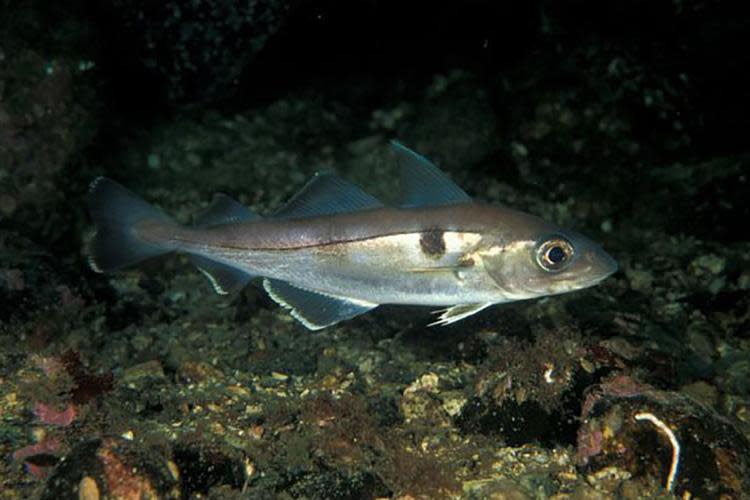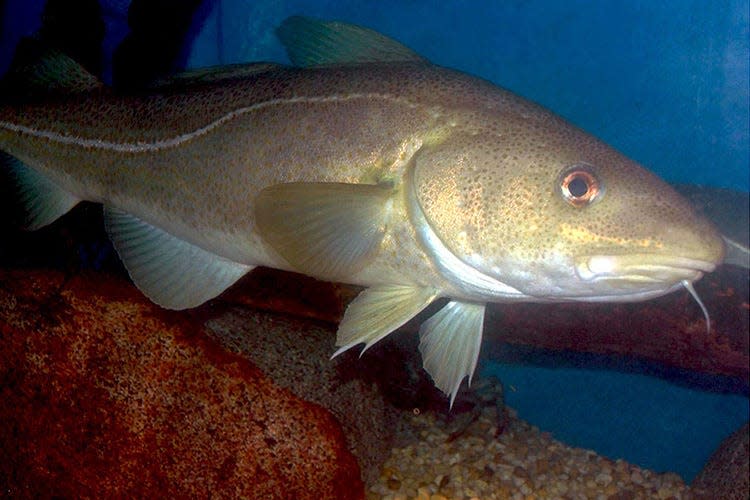Coddock? How a new cod-haddock-like fish caught the attention of scientists
We are moving into the summer season and yet winter keeps seeping into my thoughts. A strange thing occurred during the winter of 2022-23 and into this spring. An odd-looking fish has cropped up off and on mixed in with the haddock brought into Gulf of Maine ports.
This was recently brought to my attention by Linda Hunt, who is a fish dealer for Coastline Seafood. Recently while filleting a load of haddock for the market, she found five fish that she couldn’t quite identify. She had seen a few during the winter and one the day before but finding five in 200 pounds of fish all at once seemed odd. She contacted us with a photo.
Wow, what is this fish? It has the head of a haddock, the lateral line of a cod, the pectoral fin of a cod, and the meat flaked in large pieces like cod. The body shape is that of a haddock and all the other fins look like haddock fins. But it was missing the “thumbprint of God,” which is a large black spot just behind the operculum (gill plates) and above the pectoral (side fin) of the haddock.

It also had spotted skin that looked more like a cod than the silvery skin of a haddock. This was abnormal and deserved some investigation.
In 40 years of commercial haddock and cod fishing, my husband had only seen one fish that looked like this. He also saw one that looked like a cross between a cod and a pollack. Speaking with other fishermen along the coast, we determined they had seen several of these bizarre fish in January and February of this year.
I immediately sent this photo off to Dr. Erik Chapman from NH Sea Grant and Dr. Jon Hare, the director of the Northeast Fisheries Science Center at Woods Hole, Massachusetts. They both were intrigued enough to send it to their specialists who are in the process of trying to get fin clips and whole fish to study.
Sharks: Recent attacks are worrying beachgoers. But experts say they're very rare
A new species? Scientists investigate origin of fish
As a scientist, these are the questions that come to my mind. Where did these fish come from? Are these a new species? Why did this happen?
Cod and haddock naturally swim together at times. Have the changes in temperature and water currents and availability of food for the larvae caused changes in where and when these two different species spawn?
Let’s think about this: both cod and haddock are broadcast spawners. Haddock spawn in complete darkness, probably during the new moon, and very deep about 50-70 fathoms. They go through a mating ritual that involves strange grunting, and a small group or just a pair of individuals.

In culmination, they release eggs and sperm into the water column together where the eggs become fertilized.
Cod have a very different mating ritual. They must find a gravelly area on the sea floor and during the spawning cycle, they migrate into specific areas where they go through a mating ritual or dance in groups. During the spawning season, the fish disperse during the day but migrate back to the gravelly area at night to repeat their dance. As with haddock, the cod release eggs and sperm into the water column where the eggs are fertilized.

Here is another thought, since the population of cod has decreased over the past decade and haddock have increased drastically, could these populations have begun to spawn in the same area, and have the eggs of one species been fertilized by the other? And if they have, are the fish viable; can they reproduce young?
To study this, scientists will need to take fin clips to look at the DNA of the Coddock and determine if they are a mix between the DNA of cod and haddock or a completely different species or something else. Local fisherman David Goethel has been involved with several scientists from institutions throughout New England, including the University of NH, School for Marine Science and Technology in New Bedford, Massachusetts, and Gulf of Maine Research Institute in Maine studying the DNA of cod stocks in New England. This has enabled them to determine different stock boundaries and will enable better fishery management to ensure any one stock is not overfished.
More: Where have all the codfish in the Gulf of Maine gone?
These studies will also help determine where this “new fish” has come from. Along with DNA studies they will need to look at their reproductive organs to determine if they can reproduce. A very interesting conundrum indeed.Now on a darker note, my mind cannot help but wonder if this is not a natural phenomenon.
Goodbye, fish and chips? New England haddock imperiled by overfishing
One other possibility is that someone has been experimenting by manipulating DNA and producing hybrid fish for aquaculture and somehow these fish have escaped into the natural environment.
This would be highly unethical and unlikely. DNA testing should be able to answer most of these questions.
As this article is being published more of these fish have been detected and the DNA collection has begun.
The reason this is such an exciting study for scientists is very basic. This could be the beginning of a new species, how evolution begins, or just a blip and a dead end for a new species. It may take years to make a determination, and a lot more fish samples to gather DNA. For now, it is just something to let our minds consider. Historically any new species is named after the person who first discovered it, I’m thinking it should be called a Linda Coddock! I’ll keep you posted.
Ellen Goethel is a marine biologist and the owner of Explore the Ocean World at 367 Ocean Blvd. at Hampton Beach.
This article originally appeared on Portsmouth Herald: Mystery cod-haddock-like fish spotted in the Gulf of Maine

